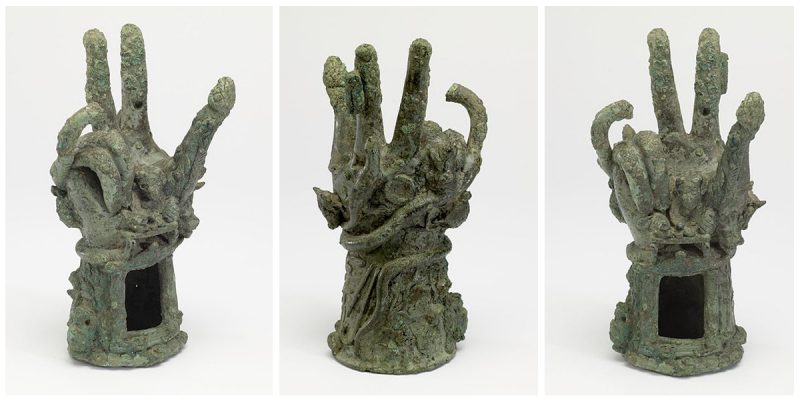Many religions were syncretistic, meaning that as they grew and came into contact with other religions, they adopted new beliefs and modified their practices to reflect their changing environment. Both Greek and Roman religious beliefs were deeply influenced by the so-called mystery religions of the East, including the Egyptian cult of Isis, which revealed beliefs and practices to the initiated that remained unexplained, or mysterious, to the uninitiated. Most popular Roman cults had associations with these mystery religions and included the prospect of an afterlife. Sabazius was an eastern god of fertility and vegetation, who in Roman times was worshiped in association with other deities, particularly Dionysus (or Bacchus, as he was generally known to the Romans). The cult of the Thracian-Phrygian god Sabazios met with some degree of popularity in the Roman Empire. Apart from a few religious stelae, the most prominent artefacts from the cult are the bronze-alloy votive ‘hands’ discovered in places such as Herculaneum and even as far north as modern Belgium.


These hands, typically made of copper or bronze, are known as the ‘Hands of Sabazios’, and generally display a gesture which appears to have been adopted by the early Christian church, and is still used by priests in blessings to this day. Many of these hands have a small perforation at the base which suggests they may have been attached to wooden poles and carried in processions. The symbolism of these objects is not well known.





On one of the hands, there is a small figure of Sabazius himself, who was typically seated in the palm of the hand above the ram’s head. Around him are his major cult symbols, including a snake, a lizard, and the heads of a lion, a ram, and a bull. On the tip of the thumb is the pinecone of Dionysus. The opening in the wrist, shaped like a temple, had a hinged door that revealed an unknown, lost object, perhaps a reclining mother and child, as seen in other examples.
